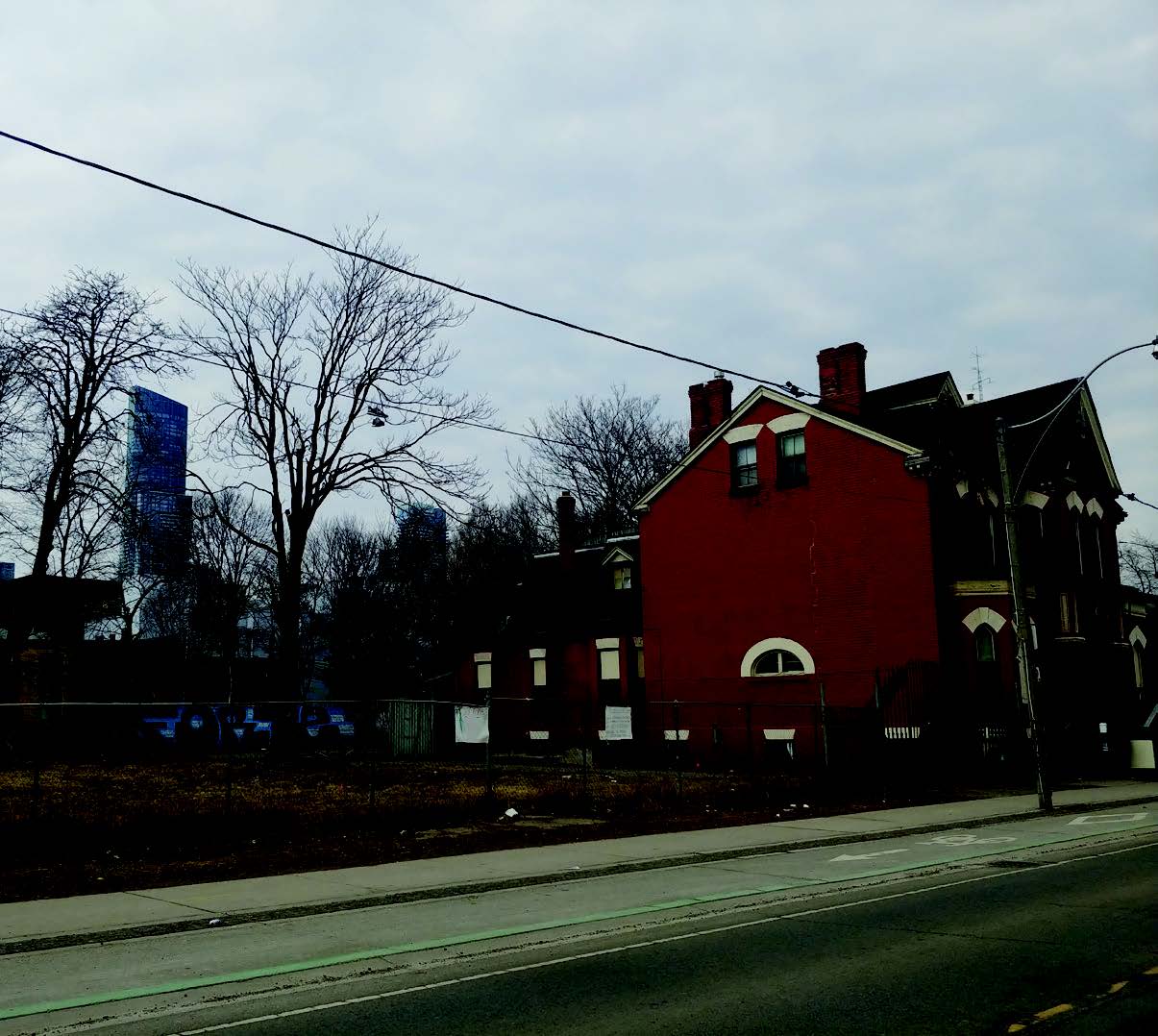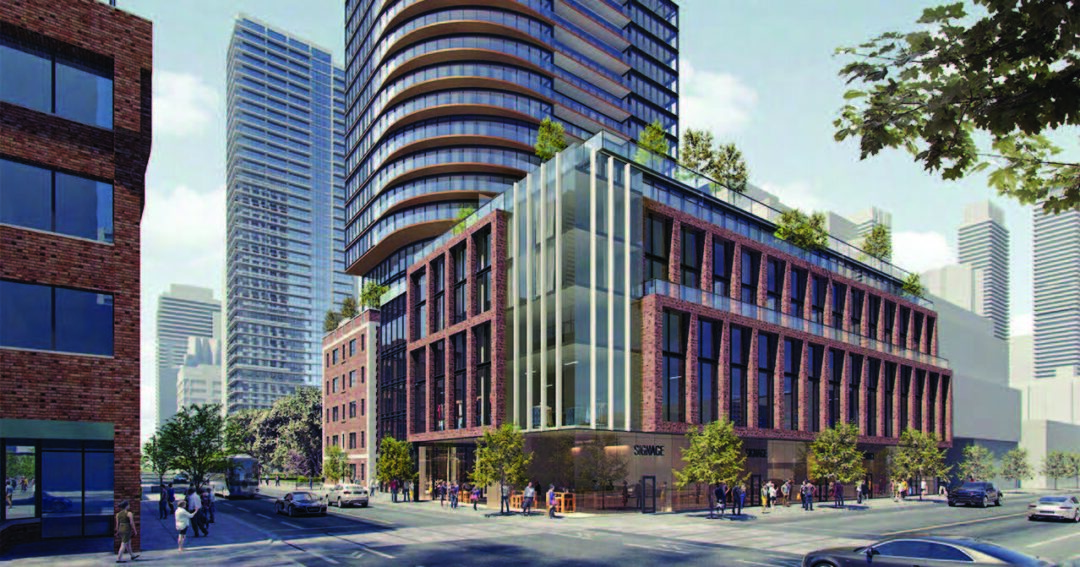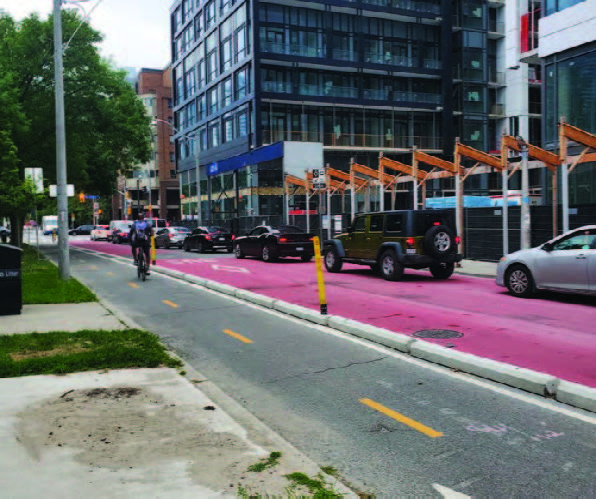By Andre Bermon, Publisher
–
An abandoned Victorian mansion abutting a large empty lot sits idly on a strip of Sherbourne Street, just a stone’s throw from Dundas East. To passersby, 214-230 Sherbourne is just another sad sight in the downtrodden Moss Park neighbourhood.
For almost 10 years, this obscure collection of properties has been a battleground of converging philosophies, pitting market-based condo
development against the need for government-supported affordable housing. But in the wider context of the Sherbourne-Dundas neighbourhood, revitalization on such a narrow scale would miss the forest for the trees.
No amount of private-sector gentrification or housing initiatives that activists lobby for will repair the damage wrought on a neighbourhood designed to isolate and contain Toronto’s urban poor population. Sherbourne and Dundas, part of the Moss Park/Regent Park corridor, continues to suffer from a post- war urban renewal scheme neglected by countless municipal authorities, city planners, and housing agencies.
This inconvenient truth – an exercise in social engineering meant to curtail the sprawl of the urban working class – has a long and storied history in Toronto’s Downtown East.
When Regent Park, Canada’s first large-scale housing project, was approved in 1947 it set in motion an era of immense transformation.
The ideological foundation for this new type of government intervention can be traced back a decade and half earlier, to the 1934 report on residential
conditions by Ontario’s Lieutenant-Governor, Dr. Herbert A. Bruce.
Bruce’s report targeted several thousand dilapidated dwellings in Moss Park/ Corktown/Cabbagetown, as well as the community known in the 1930s as simply the Ward, with descriptive language painting them as urban slums. Blind to the option of rehabilitation, Bruce and his supporters recommended clearing these areas and replacing them with green space and community amenities.
This appeal for beautification instigated a complex set of reforms concerning how and where to build low-income housing. The debate also
coincided with municipal planning shifting to a more centralized model. By the 1940s, schemes to reshape working-class neighbourhoods became known as “planned reconstruction.” To make the policy more palatable among politicians and the voting public it simply became “urban renewal.”
In 1956 a report called Urban Renewal: A Study of the City of Toronto recommended a series of legislative and financial policies to combat what were considered zones of “prevailing blight.” Areas specifically targeted included Moss Park and its environs.
Baffling to readers today, the report never attempted tp define ‘urban renewal.’ Instead, the authors considered it “more important to examine and illustrate the forms of action that might be necessary, and where and when they might be carried out in any area, [than] to define the term precisely.” In other words, neighbourhoods became guinea pigs to modernist planning theories espousing wide scale clearance and redevelopment to achieve agreeable levels of social cohesion.
Apparent in the process of uprooting communities and artificially replacing them with others was its selective nature. Moss Park lost not only a substantial number of commercial properties, which handicapped community economics, but, fundamentally, its family orientation with the arrival of a large but narrow demographic of single, low-income people. The implications of this ghettoizing of the disadvantaged is painfully clear even decades later.
Today, municipal authorities are considering a “Dundas Sherbourne Revitalization Plan.” Early reports emphasize “redevelopment” of existing
facilities like the Dan Harrison Complex, a collection of heritage houses and 1970s mid-rise apartment building on the northeast block of Dundas
East and Sherbourne, or the purchase/expropriation of underutilized private properties such as 214-230 Sherbourne Street.
These piecemeal efforts to recuperate services or outbid real estate investors will never garner long-term results that resuscitate the Dundas Sherbourne and wider Moss Park area. What is required is a multi-phased strategic vision, leveraging all nearby city-owned resources, akin to the Regent Park redevelopment, with a stress on affordable housing and healthy community living. There are plenty of investment modals, both in Toronto and across the Western world, that can help transition a failed post-
war social experiment into a neighbourhood that meets the needs of the 21st century.
The Moss Park/Sherbourne corridor cannot continue functioning in concentrated poverty, nor serve effectively the multitude of social ills undertaken by city agencies and their non-profit partners. Time for new and innovative thinking from City Council; begin by acknowledging the
mistakes of the past .




